Abstract
There has been little research on the effects of the many procedural variables in applied group contingencies. In the present study, an individualized contingency and three group contingencies with different "responder" criteria (e.g., reward based on the group average, reward based on the work of a designated, low-achieving student, or reward based on the work of a randomly selected student) were applied to the academic work of primary grade children in a learning disabilities classroom. Group social interaction during each contingency was measured systematically. Although there were large individual differences in students' academic and social responses to the different contingencies, some consistent effects were observed. Two of the four low-achieving target students did their best academic work during the group contingency which focused on their performance as a designated responder. This type of contingency also produced high levels of positive social interaction in three of four groups of children observed.
Full text
PDF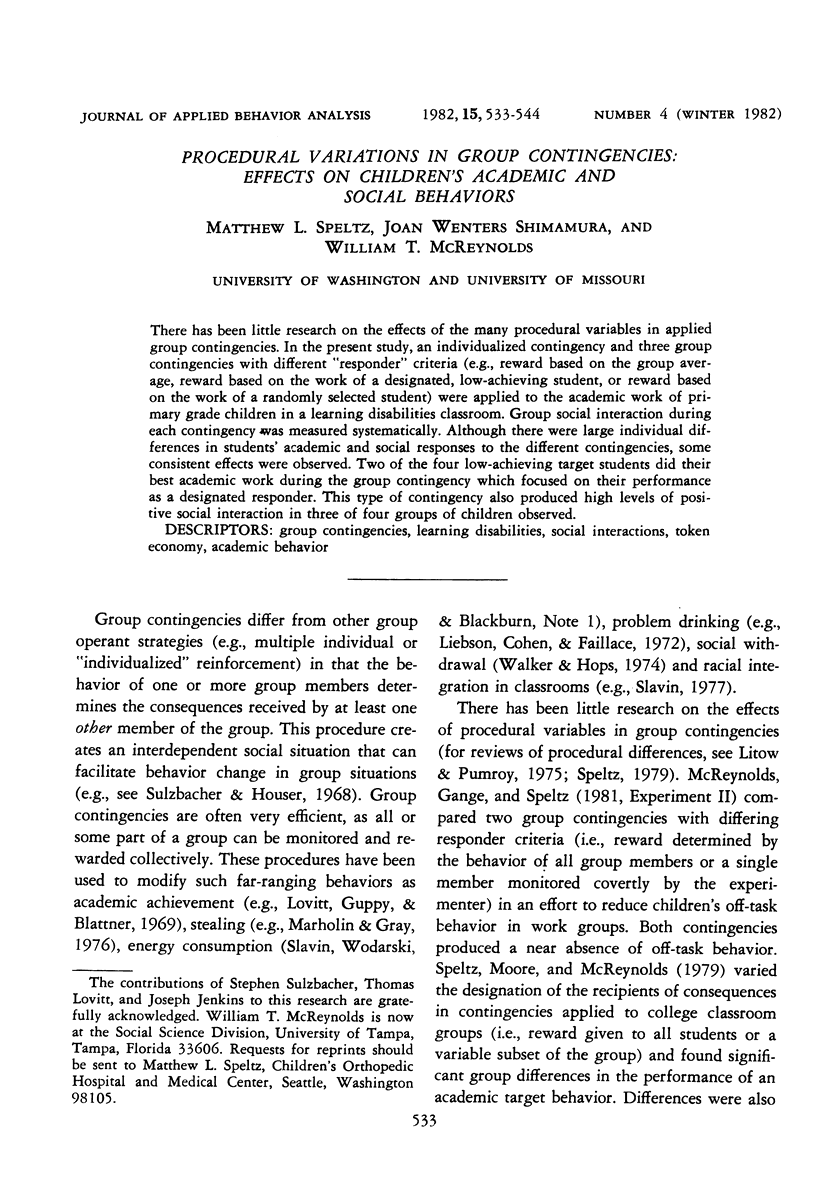
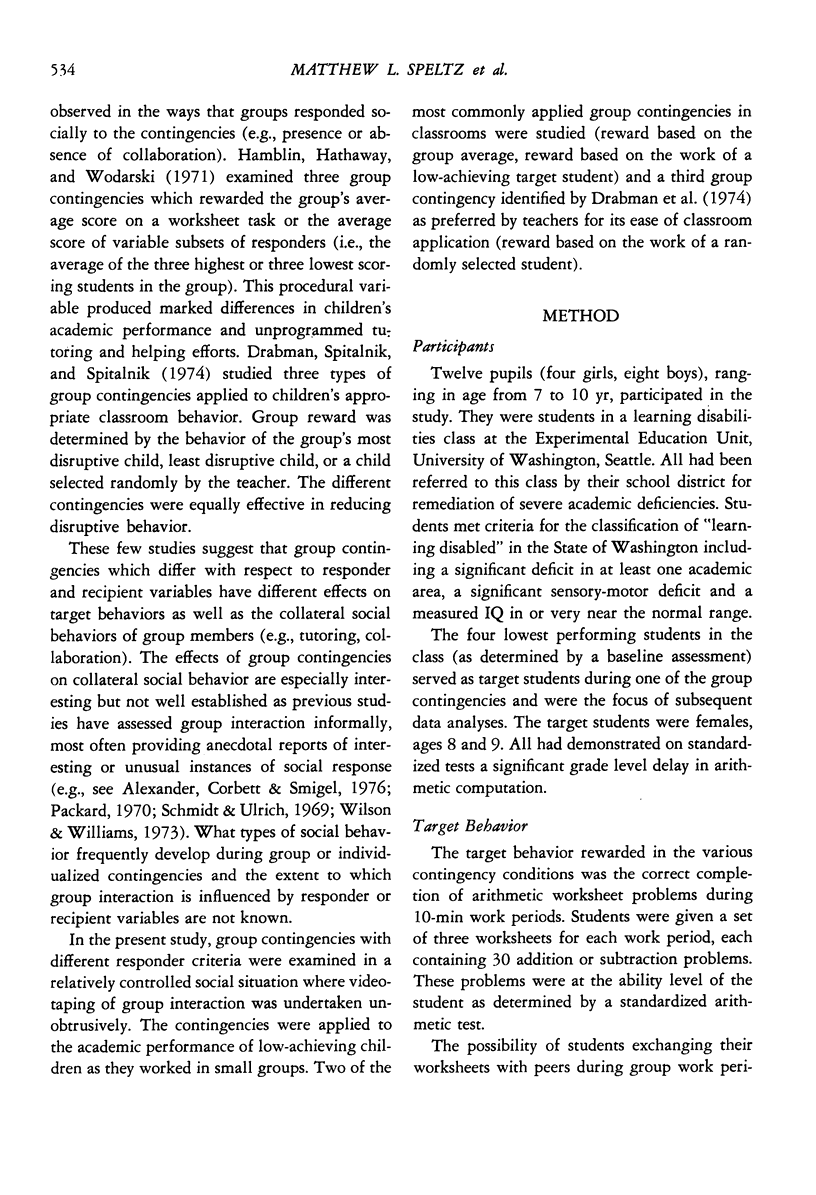


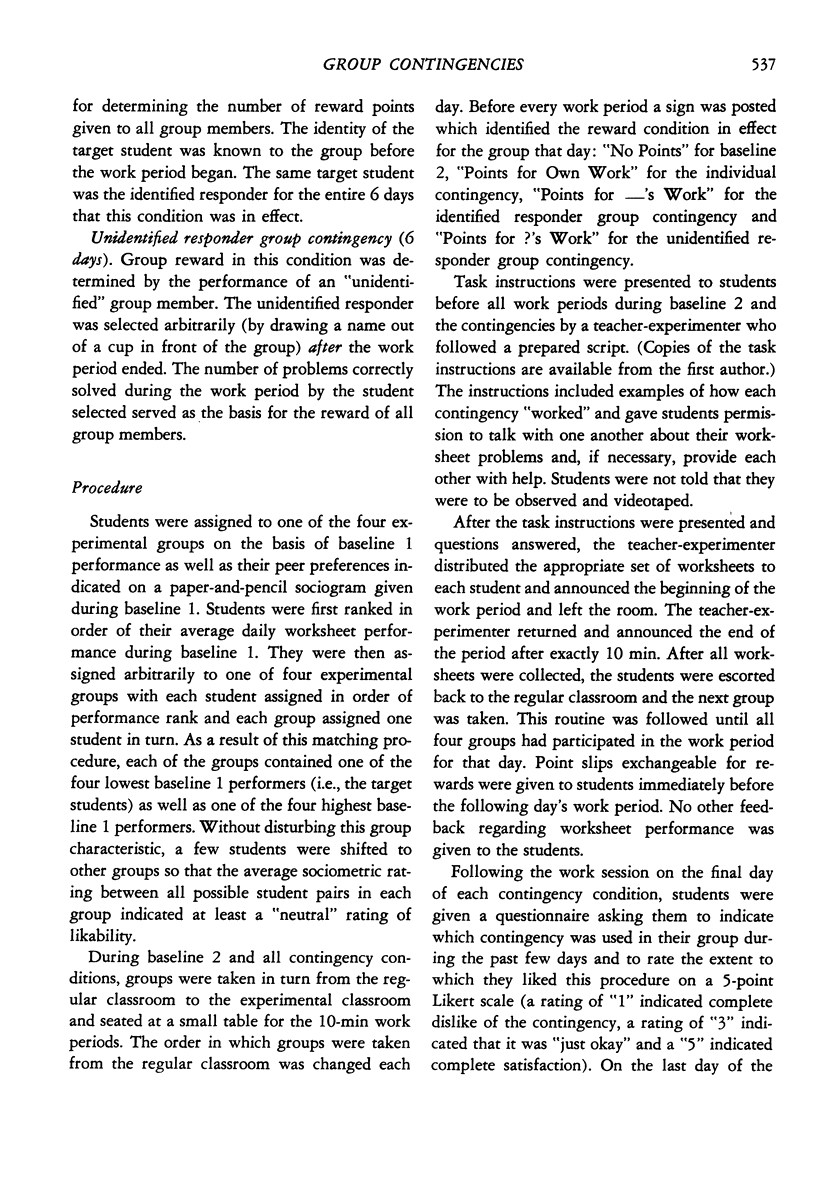
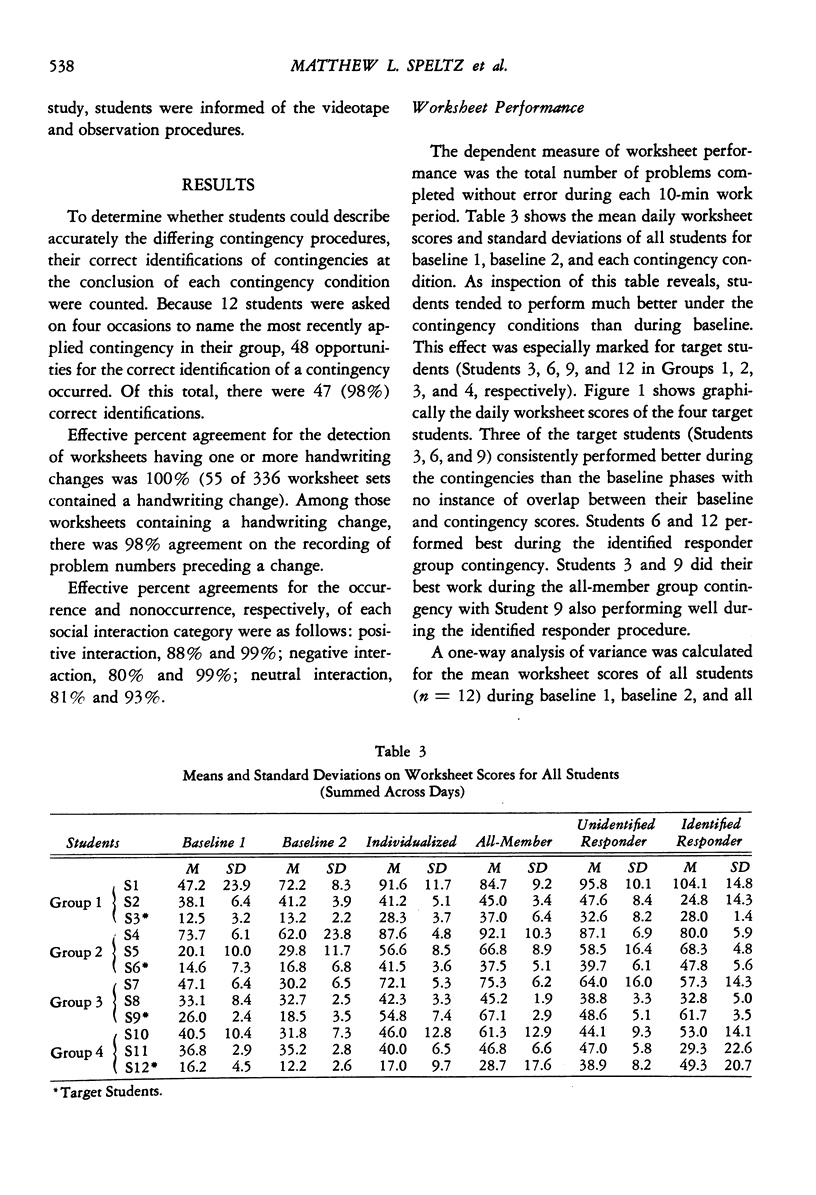
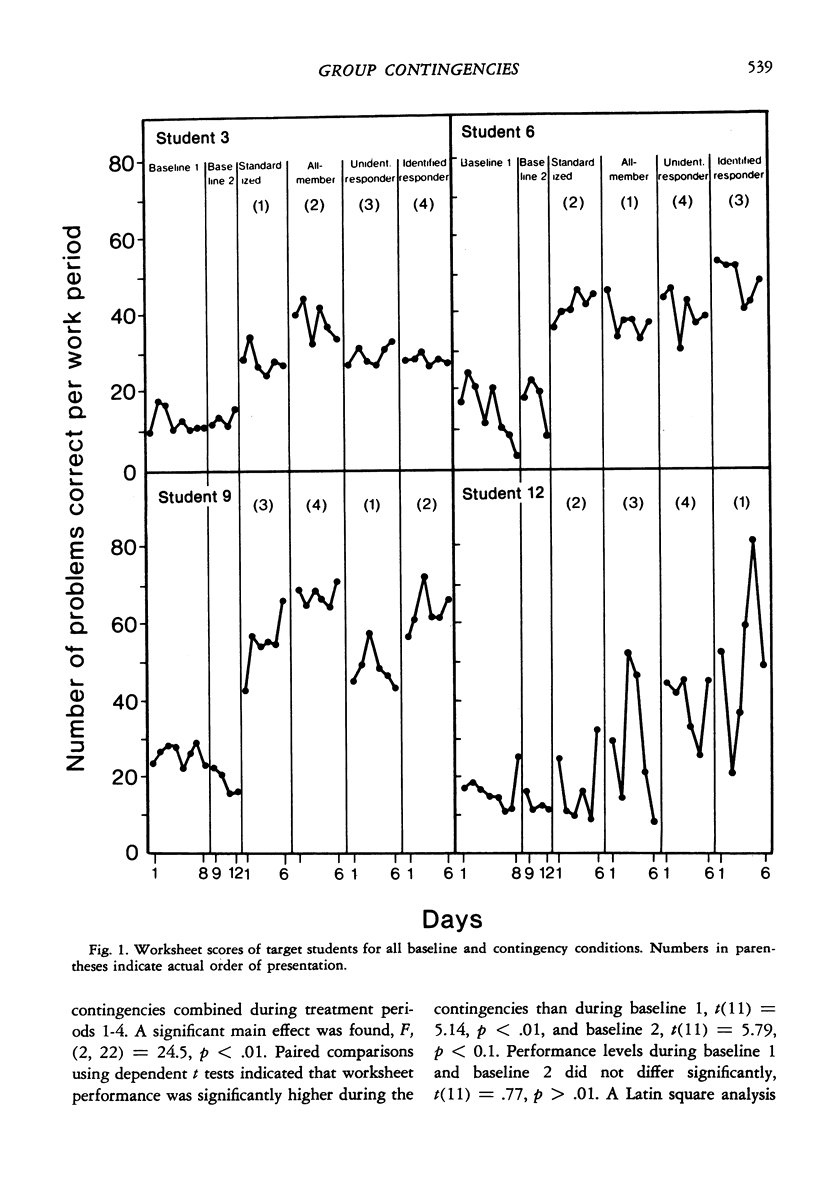
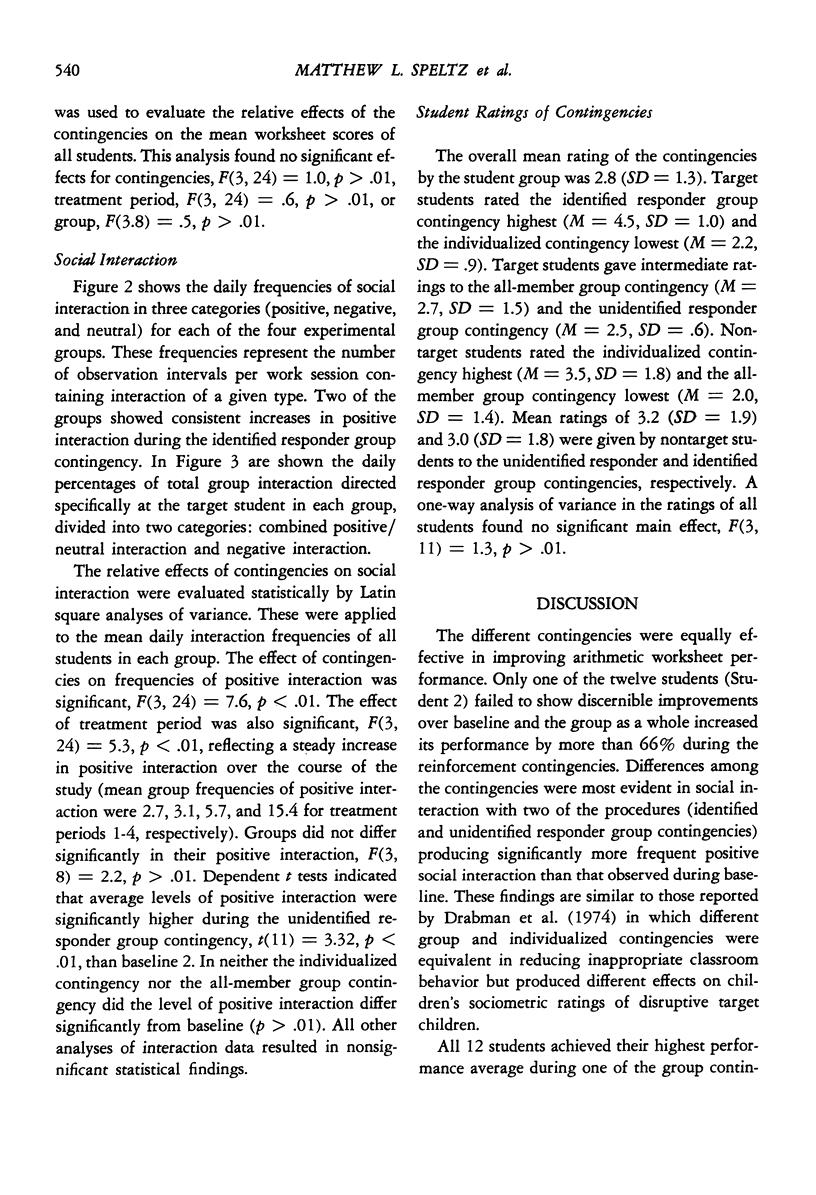
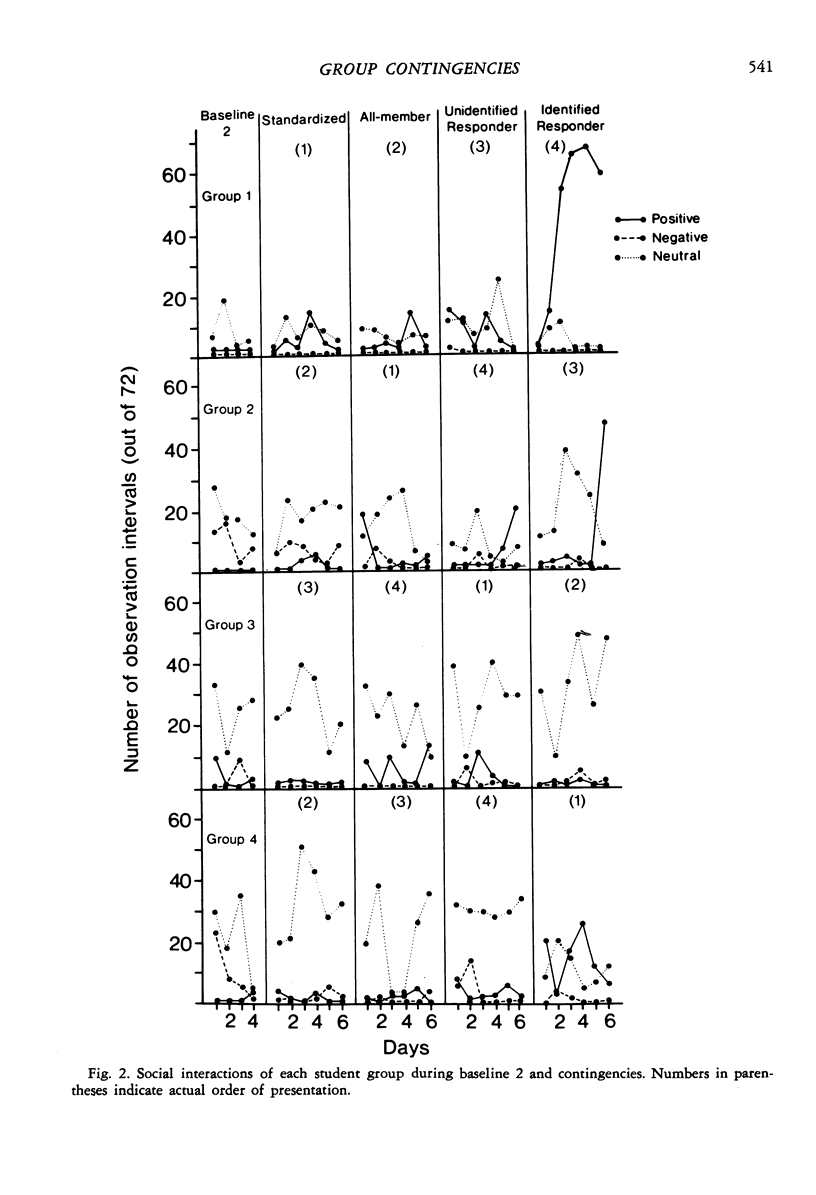

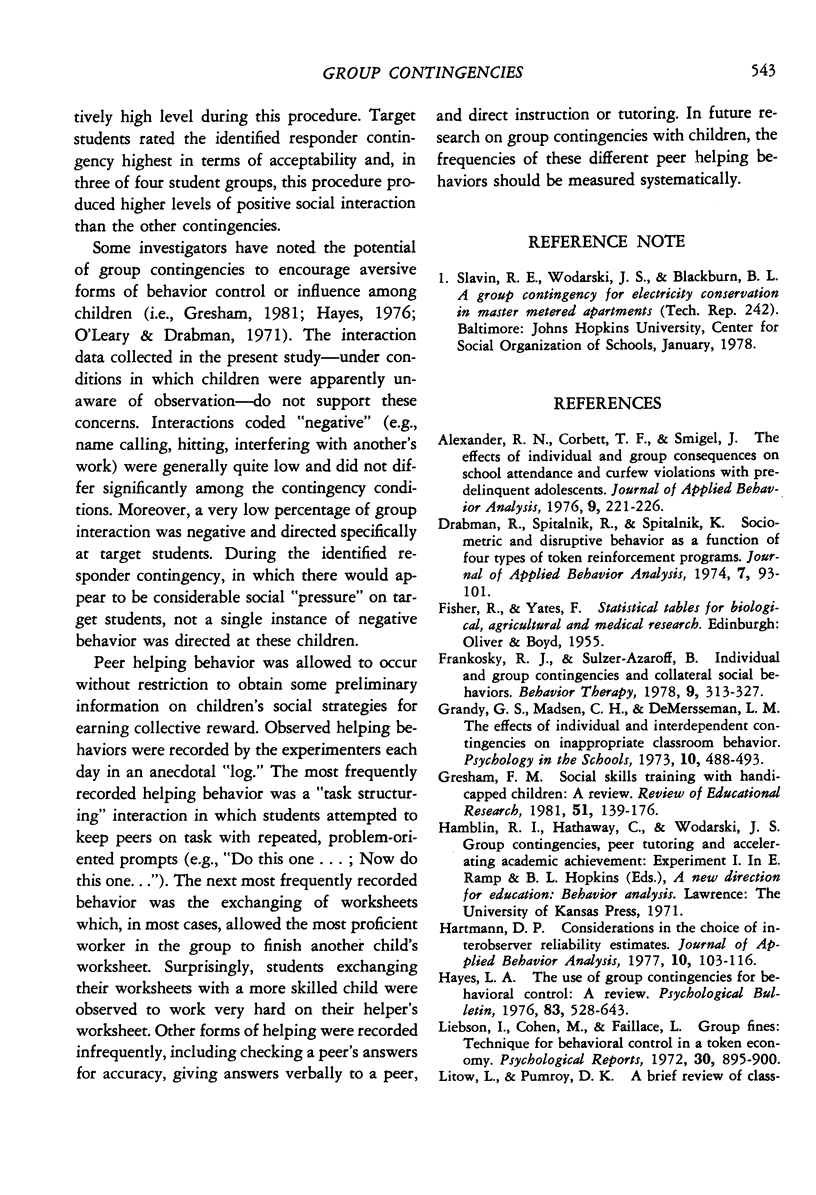
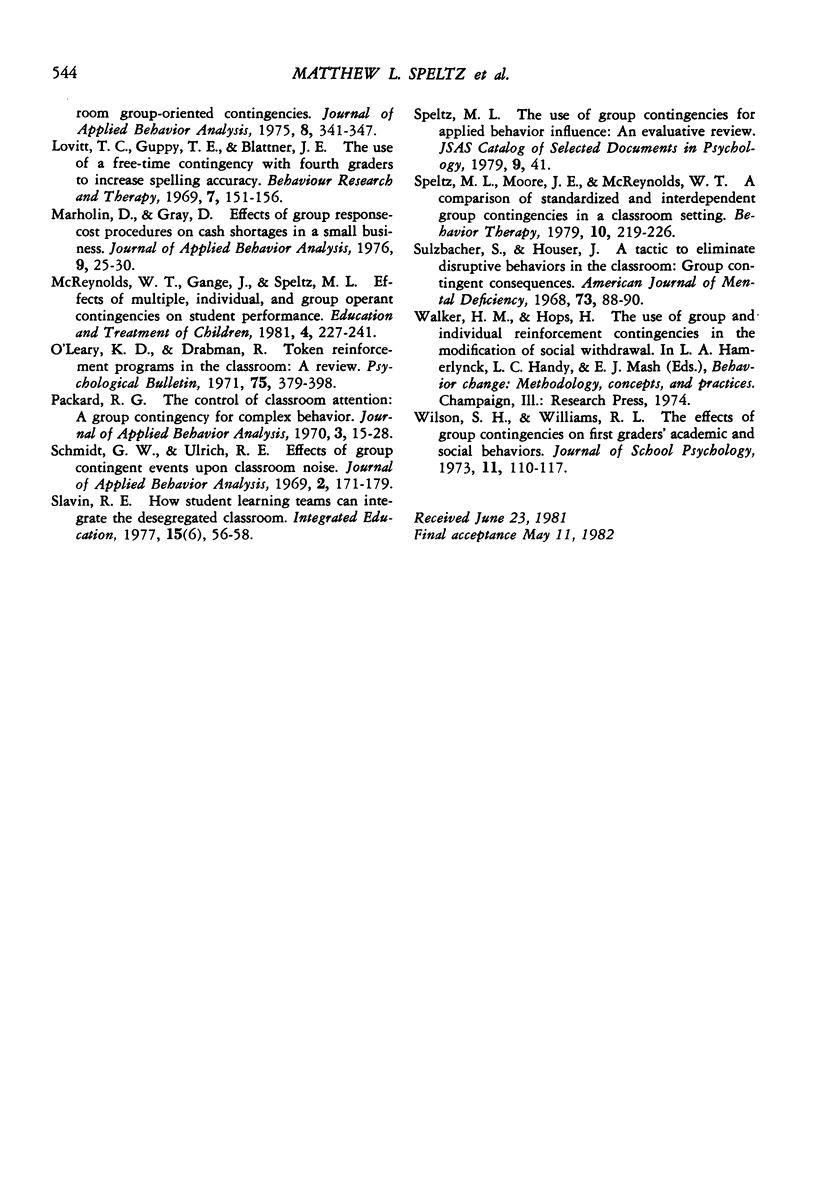
Selected References
These references are in PubMed. This may not be the complete list of references from this article.
- Alexander R. N., Corbett T. F., Smigel J. The effects of individual and group consequences on school attendance and curfew violations with predelinquent adolescents. J Appl Behav Anal. 1976 Summer;9(2):221–226. doi: 10.1901/jaba.1976.9-221. [DOI] [PMC free article] [PubMed] [Google Scholar]
- Drabman R., Spitalnik R., Spitalnik K. Sociometric and disruptive behavior as a function of four types of token reinforcement programs. J Appl Behav Anal. 1974 Spring;7(1):93–101. doi: 10.1901/jaba.1974.7-93. [DOI] [PMC free article] [PubMed] [Google Scholar]
- Hartmann D. P. Considerations in the choice of interobserver reliability estimates. J Appl Behav Anal. 1977 Spring;10(1):103–116. doi: 10.1901/jaba.1977.10-103. [DOI] [PMC free article] [PubMed] [Google Scholar]
- Litoe L., Pumroy D. K. A brief review of classroom group-oriented contingencies. J Appl Behav Anal. 1975 Fall;8(3):341–347. doi: 10.1901/jaba.1975.8-341. [DOI] [PMC free article] [PubMed] [Google Scholar]
- Marholin D., Gray D. Effects of group response-cost procedures on cash shortages in a small business. J Appl Behav Anal. 1976 Spring;9(1):25–30. doi: 10.1901/jaba.1976.9-25. [DOI] [PMC free article] [PubMed] [Google Scholar]
- Packard R. G. The control of "classroom attention": a group contingency for complex behavior. J Appl Behav Anal. 1970 Spring;3(1):13–28. doi: 10.1901/jaba.1970.3-13. [DOI] [PMC free article] [PubMed] [Google Scholar]
- Schmidt G. W., Ulrich R. E. Effects of group contingent events upon classroom noise. J Appl Behav Anal. 1969 Fall;2(3):171–179. doi: 10.1901/jaba.1969.2-171. [DOI] [PMC free article] [PubMed] [Google Scholar]
- Sulzbacher S. I., Houser J. E. A tactic to eliminate disruptive behaviors in the classroom: group contingent consequences. Am J Ment Defic. 1968 Jul;73(1):88–90. [PubMed] [Google Scholar]


